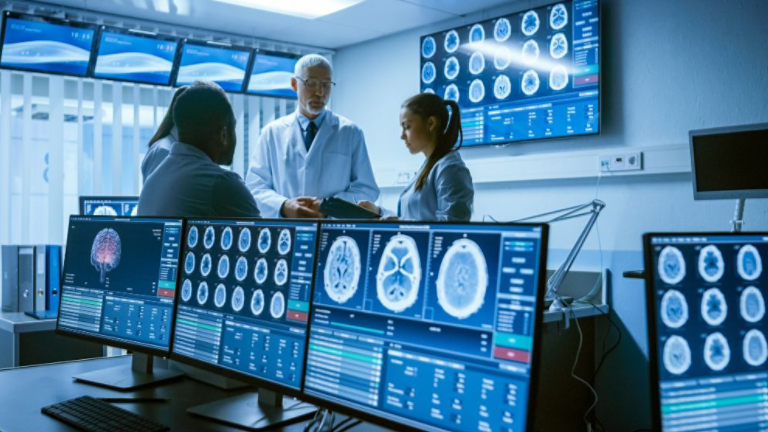Imagine, if you will, a hospital without power. Severe weather took down the power lines leading to the hospital, or a cyber-attack destroyed the power station and the emergency generator stopped working. Whatever the reason, the hospital is now extremely limited in its ability to treat patients. Operating room staff are scrambling to find lights so they can finish surgeries. Nurses are using flashlights while trying to triage patients. Electronic medical records are instantly inaccessible.
While nobody likes to think about these worst-case scenarios, as both climate-related and cybersecurity disasters are on the rise, it has never been more important to be prepared. Hospitals are essential to any community, and in times of crisis, the ability to maintain operations and perform at the highest level can mean the difference between life or death.
What if we could look at another type of complex, high-risk facility and take a page out of their energy preparedness playbook? Use what they’ve mastered to learn the best approach for building resiliency and flexibility into our healthcare facilities so that they can be a beacon of hope in times of turmoil.
Military bases pave the way
Military bases are in many ways leading the charge of creating energy resiliency through taking control of their destiny and building power secure microgrids.
Microgrid systems have been on the rise for the military and as published in the Army Installations Strategy (AIS), by the U.S. Army, in December 2020, the development of microgrids supports their AIS line of effort “Strength Readiness and Resilience”. For example, the Indiana National Guard’s Camp Atterbury installed microgrids in October 2017, and the Fort Knox Energy Program has taken multiple steps to achieve 100% power security. These examples provide a powerful blueprint for hospitals to follow as they embark on a journey to become energy secure.
Let’s take a closer look at what Fort Knox has done. Through creating their own microgrid and using a cogeneration approach, they have built important redundancies into their operations that allow them to be fully energy secure. Not only that, but the fact that they can run their entire community on their independent systems has led to $8 million in energy savings annually.
Benefits of cogeneration
Many hospitals today use backup generators as their main emergency system. This comes with many limitations. A generator or set of generators is only as good as the ability to access fuel to run it. And even if there is a reliable fuel source, emergency power will not enable full operations, only safe emergency evacuation, in most cases. Emergency power decisions are made during a building's construction phase, depending on the age, the use of spaces could be vastly changed, rendering those decisions moot during a crisis. Cogeneration, on the other hand, provides the flexibility and resiliency hospitals desire. Also known as combined heat and power (CHP), cogeneration is the simultaneous production of two or more forms of energy from a single fuel source. Simply put, it recovers the heat that is normally lost during power generation and uses it for heating or cooling. For hospitals, a cogeneration approach means they can generate their own power onsite and use automation to scale up or down based on current needs. It also means they aren’t reliant on an external grid so it can maintain consistency in catastrophic circumstances.
For a hospital to provide care in times of distress, it must ensure it can meet environmental requirements; including temperatures, humidity ranges, and air exchanges in procedure spaces. By generating its own power to create energy independence, a hospital can maintain service. Not only does this save lives, it also saves significant transport costs and lost revenues while also reducing energy costs, making more room in the budget for patient care.
Hospital leaders and employees are no strangers to constant preparedness. The last thing a medical professional should worry about is if the hospital they work in will have power. By following the Fort Knox playbook to use cogeneration and build a sustainable microgrid, every hospital can become energy secure. This not only leads to significant savings, it also ensures continuous, quality care for patients—even in times of crisis.
Trane takes the work and worry off the shoulders of the hospital to ensure they have everything necessary for power security. We create and sustain high-performing, efficient and secure facility environment that fit the needs of our clients. Our work with Fort Knox and hospitals around the country means we understand the struggles organizations must overcome in their efforts to become 100% power secure while balancing regulations and compliance issues.


